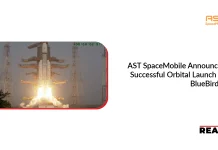Shield AI revealed its most ambitious project yet: the X-BAT, an AI-piloted, vertical take-off and landing (VTOL) fighter jet designed for contested, infrastructure-denied environments. European Security to radically change how airpower is projected, the X-BAT combines autonomy, multirole capabilities, and deployment flexibility in one platform.
What the X-BAT Brings to the Battlefield
The X-BAT features Shield AI’s Hivemind autonomy software. This lets it fly without human pilots. It can operate in areas without GPS or communications. It can also work alongside manned planes or jets on its own.
Key specifications and features include:
VTOL capability and a range of over 2,000 nautical miles let us operate from ships, islands, or remote spots.
Multirole mission profile: strike, counter-air, electronic warfare, and ISR (intelligence/surveillance/reconnaissance).
Compact footprint: Fit up to three X-BATs in the deck space of one legacy fighter or helicopter.
This fighter is affordable and easy to maintain. It delivers 5th-gen performance at a much lower lifecycle cost than traditional jets.
Open architecture built for teamwork with existing and future U.S. Air Force and Navy systems.
In the words of Shield AI’s co-founder Brandon Tseng:
Also Read: LG Electronics Joins SDVerse to Advance Software-Defined Vehicle Solutions
“X-BAT represents the next part of that plan, expanding U.S. and allied warfighting capacity through a transformative, runway-independent aircraft.”
Implications for the Defense Industry
This unveiling marks a major shift in the defense and aerospace landscape. The move toward autonomous combat aircraft and runway-independent platforms signals how future airpower might be structured rather than how it has been.
1. Autonomy and contested operations
The X-BAT’s ability to penetrate contested battlespaces where communications or GPS signals are degraded brings autonomy into the forefront of aerial warfare – raising the bar for what unmanned systems can do.
2. Distributed operations & affordability
By removing reliance on runways and expensive tankers or large aircraft carriers, the X-BAT enables a more distributed posture. The lower cost structure also means more platforms can be deployed, creating “mass” by numbers rather than just heaviness.
3. Manned-unmanned teaming (MUT/CCA)
As unmanned systems evolve to collaborate with crewed platforms – as wingmen or autonomous mission elements – the defense industry needs to adopt new doctrines, training and supply chains. The X-BAT directly fits into this shift.
4. Market and supplier disruption
Defense contractors and aerospace suppliers must now anticipate not only new platforms but entirely new paradigms – software-defined combat systems, autonomy stack integration, lifecycle cost reduction, and supply chain agility.
Effects on Businesses Operating in the Defense Technology Industry
For companies in the defense technology ecosystem – from avionics suppliers and autonomy software vendors to logistics and training firms – the X-BAT announcement creates both opportunity and challenge.
Opportunities
Software and autonomy vendors: With autonomy moving into high-end combat aircraft, software modules, simulation tools, and AI avionics will surge in demand.
Modular and agile manufacturing: The shift toward attritable, distributed platforms demands manufacturers able to build at scale, with rapid iteration and cost efficiency.
Support & sustainment services: Newials of deployment models (e.g., ship-launched, container-based launch) mean new logistics, maintenance, and mission support models.
Challenges
Regulatory and Certification Hurdles: Autonomous combat planes bring new challenges. These include regulation, compliance, and ethics.
Legacy Business Models Disruption: Traditional large-fighter programs may see budget cuts. This could happen as cost-effective options like X-BAT become available.
Workforce and Training Transitions: The rise of autonomous platforms needs new skills. Operators, maintainers, and trainers must adapt. There will be a greater focus on software and less on traditional pilot training.
The Bigger Picture
The launch of the X-BAT by Shield AI isn’t just about a new aircraft. It marks a big change in defense technology. Now, software, autonomy, and cost-effectiveness matter more than ever. Countries want strong defenses in places like the Indo-Pacific. Designs like the X-BAT provide flexible and sturdy airpower. Analysts believe this initiative fits with the U.S. Department of Defense’s priorities. It emphasizes dispersal, autonomy, and survivability.
From a business perspective, companies across the defense stack must reassess – focusing on autonomy-ready systems, software-defined wings, and enabling rapid fielding of systems that may operate alongside humans or replace humans in high-risk scenarios.
Conclusion
Shield AI’s X-BAT transforms air warfare. It combines VTOL, autonomy, multirole capability, and affordability in a game-changing way. This sets a new industry standard that players must meet. The defense technology industry is at a crucial point. It needs quick innovation, adaptation, and teamwork.




